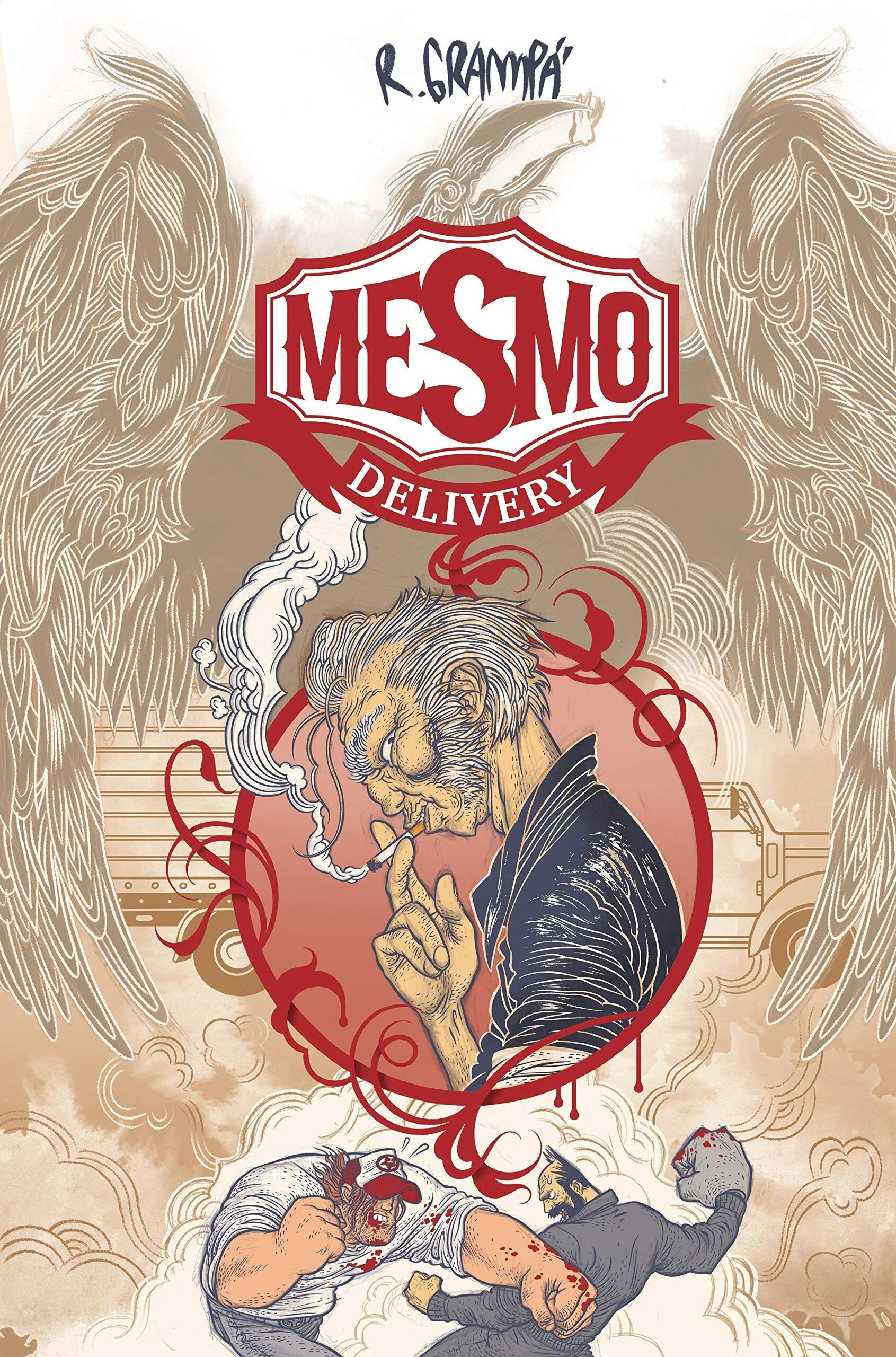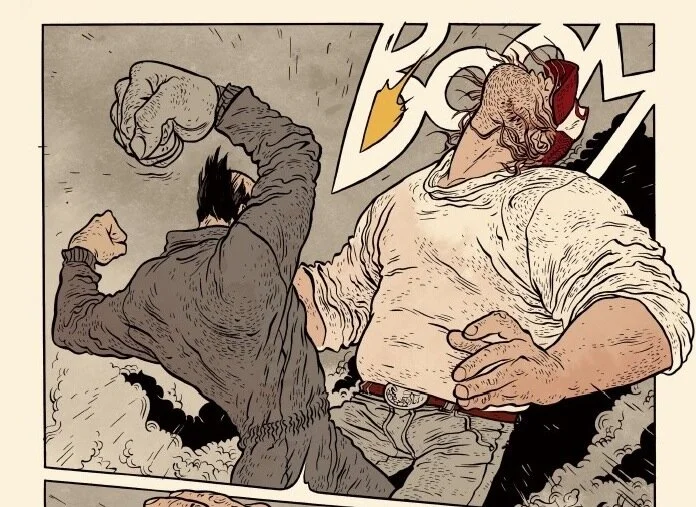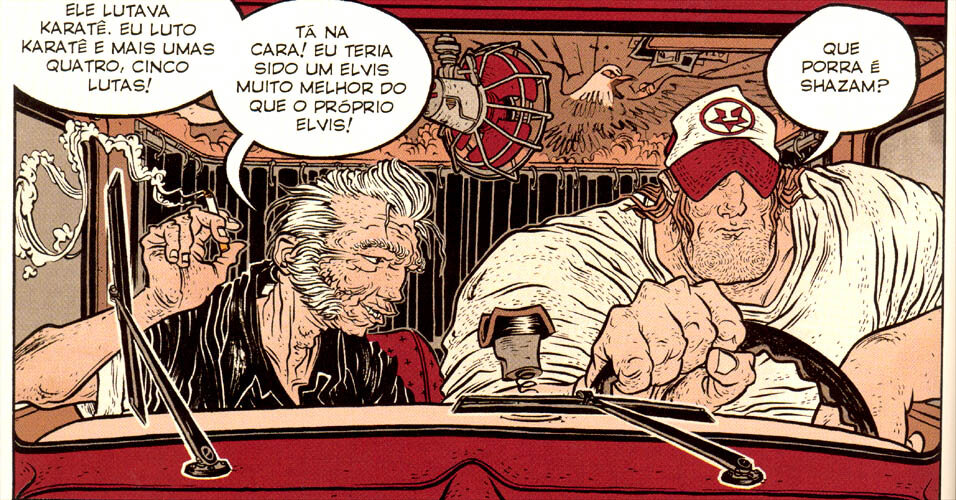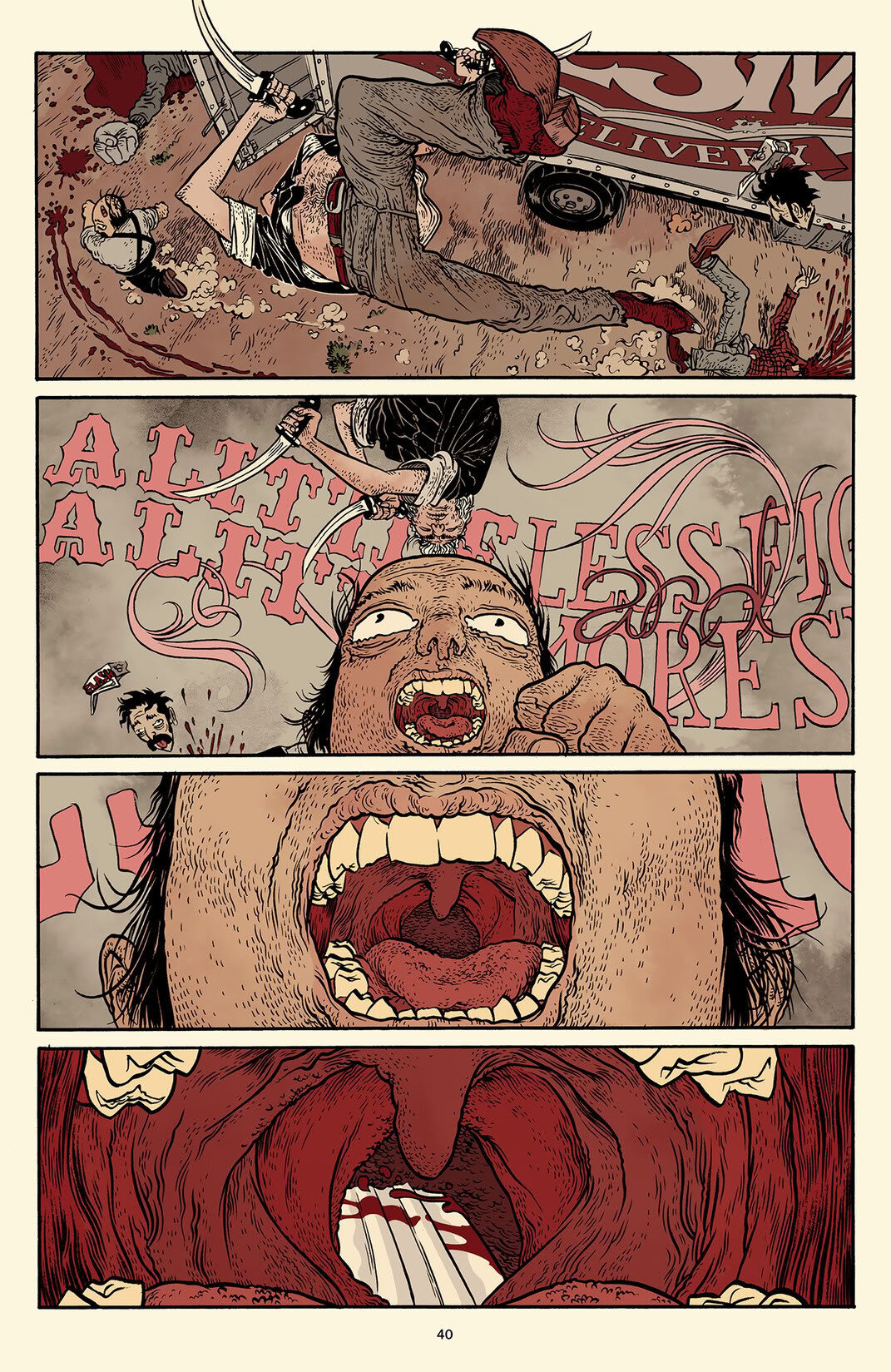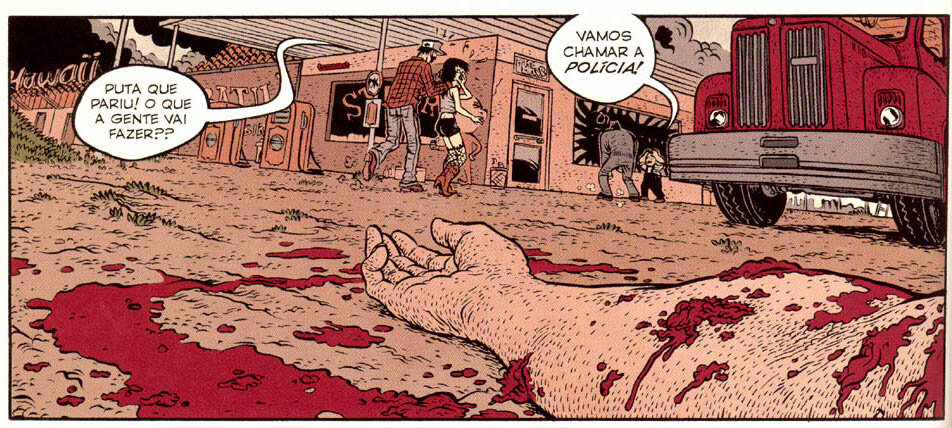Mesmo Delivery (2008)
An aspect of seeing an artist’s output that is quiet yet fascinating is discerning their influences from their work. I don’t just mean in terms of style or subject matter, but also various components of the narrative. Character types, settings, certain scenes or plots that can quietly inform the reader about what not only interests the artist currently, but probably what were some of the pieces of art and entertainment they were exposed to when younger and which has stayed with them for many decades later.
There isn’t a ton of information out there about writer/illustrator/penciler/inker/cover artist/animator/director Rafael Grampá. He’s not some enigmatic figure firing off cool comic book work from the shadows or anything like that. It just seems that he’s been very specific about what he discloses and talks about (for whatever reason, which is completely fair as no one owes people their entire lives). Hailing from Brazil, Grampá hasn’t been exceptionally prolific in the past 12 or so years since he hit the American comic scene—but whatever may be seen as lacking in quantity is more than made up in impact.
He’s worked with Frank Miller on the (possibly final?) installment of The Dark Knight Returns saga (The Dark Knight Returns: The Golden Child). He’s contributed various pages and covers to all sorts of titles at basically every major comic book studio, including some great work for Marvel’s Strange Tales.
Seemingly a cross combination of Frank Darrow (with his heavily lined/ornate figures), James Jean (with that ethereal sense of grace and flow between objects), and a touch of Paul Pope (a graffiti and punk approach to classic layouts and characters), Grampá’s style is more than just a hybrid of these artists and instead unique and immediately recognizable. And that particular approach was announced loudly with his 2008 breakthrough hit, Mesmo Delivery.
A one-shot/trade paperback/graphic novel (the distinction between those terms seems nebulous, especially in this case), it’s a very thin plot about two truckers transporting some sort of precious cargo pulling in to a truck stop and getting into some fisticuffs with the rowdy patrons. Simple enough, right? Not only is the story a bit more complicated than that (more in a moment), but it’s in the telling that Mesmo Delivery truly shines.
The audience follows along with the two truckers engaging in a bit of Tarantino-esque dialogue about Elvis (doubly so as the filmmaker not only covered this subject matter in TRUE ROMANCE but also once played an Elvis impersonator on The Golden Girls). The driver is a massive lump of a human named Rufo, a former fighter now in charge of hauling this mysterious freight for reasons not entirely known. He’s not the most talkative guy, packed tightly in the cab and hunched over the wheel in almost comical fashion. Adorned with his trusty red trucker cap (which rarely reveals his eyes), the dude screams “‘70s shitkicker” who has seen a lot of bloody brawls.
Meanwhile, riding shotgun, is Sangrecco. He’s an aging Elvis impersonator whose wiry frame and apparent advanced years belie his ability to kickass in the most savage way possible. The design is clearly Elvis inspired, with a hint of those “Patch”/cowboy period of the Wolverine comic in the ‘80s, but there is also a bit of Jim Jarmusch in how Grampá draws him.
Who knows if this will ever be adapted into anything, but casting Jarmusch as a quasi-psychopath Elvis impersonator with impressive blade skills would at the very least pique many an indie film nerd’s interest. The chattermouth Sangrecco chooses to nap in the cab while Rufo grabs a drink in the truck stop bar. The patrons take a notice of this behemoth and soon the local tough guy, Forceps, is challenging Rufo to a fight in order to impress a lady/win a bet. The majority of the remainder of the comic book is that fight, which grows to gristlier heights with each page. The combat gore is over the top, akin to Darrow’s work in Hard Boiled or Chris Burnham’s hyperviolent art in Officer Downe. As noted, the story isn’t complicated, but it is richly layered in its escalation of casualties and brutalities. Mesmo Delivery’s blood-soaked panels convey that Grampá had a lot of fun with thinking of ways to show new forms of fighting and gore.
The fighting continues when Sangrecco is pulled into the fray, and then things really take off. That hidden savagery is revealed as he reigns hell down upon everyone around him that has decided to lay arms against Rufo and the cargo inside the truck. With a brilliant use of lettering and sound effects, Grampá creates an Elvis soundtrack for the slaughter while the kinetic visuals presage those phantasmagoric action sequences in Sion Sono’s WHY DON’T YOU PLAY IN HELL? or Takashi Miike’s later samurai films like 13 ASSASSINS and BLADE OF THE IMMORTAL. With Grampá’s style, this onslaught becomes a mix of sickening, innovative, and mesmerizing.
Ultimately the conflict gets settled and readers are clued in to what Rufo and Sangrecco are hauling across the highways. They depart, leaving behind a bloody wake, and a strong sense that this is just one of the many misadventures the duo will have in their travels.
As noted, there are a lot of graphic influences in Mesmo Delivery from all sorts of film and comic book work that collide underneath Grampá’s pen. But it’s also worth noting the larger pop culture bits that may have gotten mixed into the tale’s DNA. Beyond Elvis and the hyperviolence of manga/anime, the trucker motif goes back to a brief sub-genre surge in the ‘70s of trucker flicks like BREAKER! BREAKER! (with Chuck Norris as a karate fighter/truck driver/CB enthusiast) or CONVOY (also found in parts of SMOKEY AND THE BANDIT and the TV show BJ And The Bear), which has tried to get a resurgence in movies like OVER THE TOP, WHITE LINE FEVER, and BLACK TOP. The malevolence on the roadside with horrific bodily harm also harkens to 1986’s THE HITCHER where a stretch of highway becomes the battleground between two combatants that leaves corpses in all sorts of horrible conditions around them.
There’s also the little touches, like that Forceps has a screw-on fist that delivers deafening blows on Rufo. This can be seen with Mr. Han in ENTER THE DRAGON and with Mr. Igoe in INNERSPACE. Those Elvis references could speak to Tarantino, or even Jarmusch’s MYSTERY TRAIN, or perhaps that version of the American West that emerged in the
latter half of the 20th century that suggested a fairly lawless desert with long stretches of asphalt populated by a savage people keen on fighting. The fact that Grampá is able to distill all of these elements—from graphic design influences, to narrative tropes, to an infusion of pop culture relics—and then find ways to innovate and tell a great (self-contained) story is incredibly impressive. Mesmo Delivery announced this major new talent on the scene and the Brazilian artist is more than deserving of his impressive stature in the community; this is a book that moves at a lightning pace and offers parts both familiar and brand new, while building a world without endless exposition or wasted space.
The only note is that back in 2009, Grampá and others teased a bunch of action figures from Mesmo Delivery. It would be great if this line was brought back and everyone could have their own pair of asphalt asskickers in their homes.


